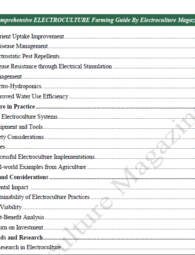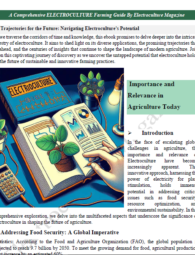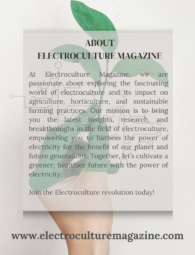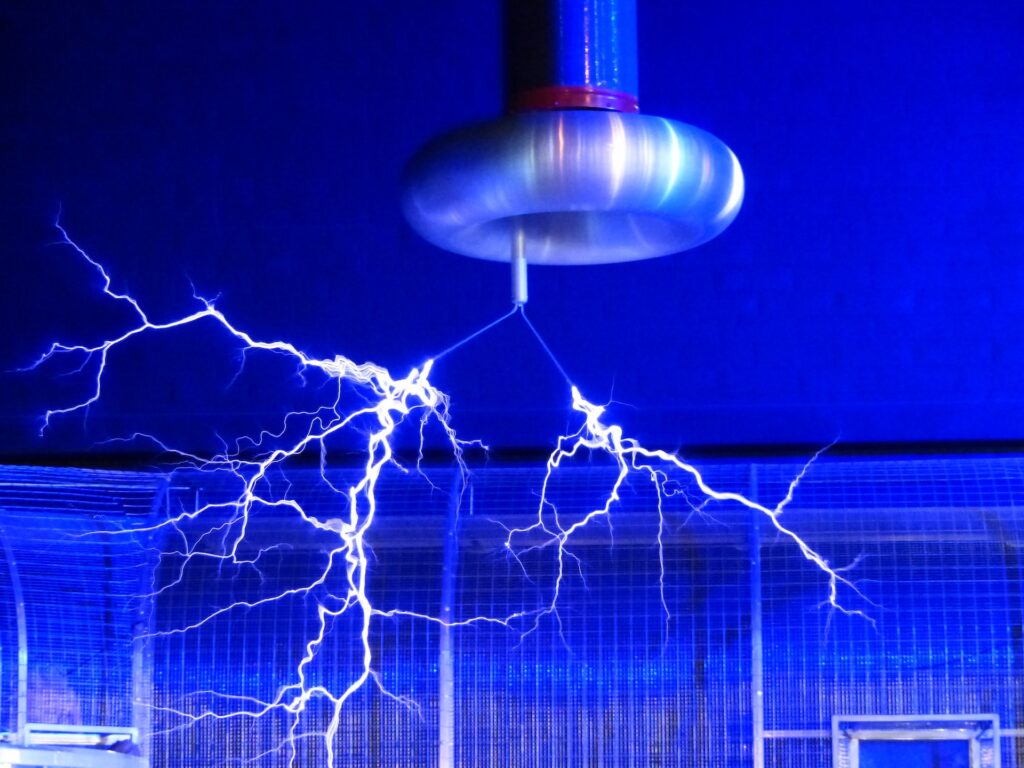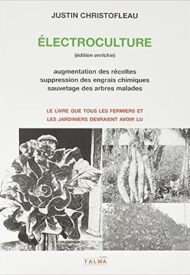Welcome to Electroculture Magazine, a platform dedicated to fostering open-mindedness and critical thinking. In this captivating blog post, we’re diving deep into the controversial realm of “Electroculture: A Pseudoscience – The Truth About Electroculture.” Here, we value the importance of exploring every angle, even those that challenge established beliefs. So, join us on a quest to unravel the reality behind this technology, sorting through fact and fiction while examining the scientific evidence.
We extend a warm invitation to you to partake in respectful and enlightening discussions as we navigate the intricate landscape of this captivating field. Get ready for a journey that promises to challenge your preconceptions and broaden your horizons regarding electroculture.
At its core, electroculture proposes a humble electrical current as a catalyst for expediting plant growth, a practice often met with skepticism as a pseudoscience. Central to this theory is the notion that plants can harness and leverage electrical charges from their environment, thereby enhancing their growth processes. This concept has been circulating for over a century, with fervent supporters believing that electroculture holds the key to revolutionizing agriculture through amplified crop yields and decreased reliance on chemical fertilizers.
Yet, despite these bold claims, substantiated scientific evidence for the efficacy of electroculture remains conspicuously absent. In fact, electroculture has frequently been brushed aside as pseudoscientific by many discerning researchers and agricultural experts. In this article, we’re delving into the heart of the matter, examining both the contentions made by proponents of this technology and the contrasting data that supports and opposes this electrifying technique.
The Promises of Electroculture: A Closer Look
Proponents of electroculture herald it as a game-changer for the farming industry. They suggest that by carefully administering controlled electrical currents to plants, remarkable growth spurts can be induced. These currents, they claim, stimulate roots to absorb nutrients more effectively and subsequently amplify overall plant development. This, in turn, is posited to lead to larger harvests and a significant reduction in the need for chemical fertilizers, thereby addressing some of the pressing concerns of modern agriculture.
Buy Our Handcrafted Electroculture eBook Now…
A Clash of Perspectives: The Debate
While the enthusiasm surrounding electroculture is palpable, skepticism runs equally deep within the scientific community. Many experts raise valid concerns about the variability of results and the lack of consistent data across different studies. The intricacies of plant biology, the complexity of soil interactions, and the delicate balance of electrical stimuli are factors that muddle the waters of electroculture’s potential effectiveness.
Critics highlight that while there might be instances where positive results are observed, the absence of a universally replicable method casts doubt on the viability of electroculture as a widespread agricultural practice. Furthermore, the absence of a solid theoretical foundation that explains precisely how and why electrical currents would trigger plant growth raises legitimate questions about the mechanistic underpinnings of the process.
Navigating the Uncharted Territories
In this ongoing discourse, it’s vital to approach electroculture with a blend of curiosity and caution. While the claims made by fervent supporters hint at revolutionary possibilities, the dearth of consistent, rigorous scientific proof demands that we tread carefully.
Here at Electroculture Magazine, we embrace the ethos of inquisitiveness. We aim to provide you, our esteemed readers, with an objective examination of the evidence at hand, while also acknowledging the tantalizing potential that electroculture offers. As we navigate the uncharted territories of this electrifying technique, our goal is to encourage a well-informed dialogue that transcends preconceived notions.
So, dear readers, buckle up for an intellectually stimulating journey. Together, we’ll navigate the currents of information, probe the depths of data, and illuminate the nuances that shape the electrifying debate around this technology. Get ready to challenge assumptions, expand your perspectives, and engage in a spirited conversation that takes us one step closer to understanding the truth behind this technology.
Describing ElectroCulture
In the process of this technology, plants are subjected to a mild electrical current that is often produced by a low-voltage battery or generator. According to the theory underlying this technology, plants may take up electric charges from their surroundings and utilise them to boost their growth and productivity. This technologyproponents assert that this technique can enhance soil quality, boost nutrient uptake, and lessen the need for chemical pesticides and fertilizers.
Over the years, a variety of electroculture techniques have been put forth. Burying copper or zinc rods in the ground close to the plants and connecting them to a low-voltage power supply is one such technique. Another approach is wiring the plants’ bases and connecting them to a power source. Both times, it is said that the electrical current encourages plant development and enhances the health of the plants.
Despite the long history of this technology, there is little scientific evidence to support its effectiveness. Many experts in the field of agriculture consider electroculture to be a form of pseudoscience.
The Claims of ElectroCulture
Proponents of electroculture make several claims about the benefits of this practice. Some of the most common claims include:
- Improved Soil Quality: Proponents of this technology claim that the electrical current generated by this practice can improve soil quality by breaking down organic matter and releasing nutrients that are beneficial to plants.
- Increased Nutrient Uptake: Supporters of electroculture claim that the electrical current can stimulate the roots of plants, causing them to absorb more nutrients from the soil.
- Reduced Need for Chemical Fertilizers: Proponents of electroculture claim that this practice can reduce the need for chemical fertilizers and pesticides, thereby reducing the cost and environmental impact of farming.
- Improved Crop Yields: Supporters of this technology claim that this practice can increase crop yields by enhancing plant growth and productivity.
The Evidence for ElectroCulture
The assertions stated by supporters of electroculture are not well supported by science. In fact, numerous research have demonstrated that this technology either has no effect on plant development or even has a detrimental effect.
For instance, a 2004 study in the journal Plant Physiology discovered that plants cultivated in soil exposed to an electric current had lower amounts of chlorophyll and were more prone to disease.
A different investigation, which was reported in the journal Environmental Pollution in 2006, discovered that plants growing in soil that had been exposed to an electric current had increased concentrations of heavy metals in their tissues. The assertions stated by proponents of this technologies are not well-supported by scientific research. In fact, the majority of the available information points to this method as nothing more than a pseudoscientific practice.
University of Western Australia researchers reviewed the scholarly literature on this technology for a study that was published in the Journal of Agricultural Science. The assertions that this technology may enhance soil quality, boost nutrient uptake, or lessen the need for chemical fertilizers and pesticides were found to be unsupported by any research. Electroculture, according to the researchers, is a “misguided and poorly supported” technique.
Researchers from the University of California, Davis discovered in another investigation that the electrical currents employed in electroculture had no impact on plant productivity or development. After several weeks of electrical current exposure to tomato plants, the researchers discovered no appreciable variations in plant height, leaf area, or fruit yield as compared to control plants.
Researchers from the University of Florence studied the scientific literature on this technology for a review study that was published in the journal Scientia Horticulturae, and they came to the conclusion that there was “no scientific evidence supporting the claims made by proponents of electroculture.” The scientists found that many previous investigations on this technology had been ill-conceived and lacked scientific rigor.
Electroculture is still being promoted by some people and businesses despite the absence of scientific proof to back the claims made by its proponents. Consumers and farmers should be aware of the absence of scientific evidence supporting this technology so they may make educated judgments about whether or not to utilize it in their farming operations.
The Dangers of Pseudoscience
Electroculture: a pseudoscience that can be hazardous since it can influence individuals to make decisions based on incorrect or deceptive information. In the case of electroculture, farmers who think the practice is helpful might be squandering their time and resources on an unproven method.
Furthermore, the public’s confidence in science and scientific institutions may be damaged by the propagation of pseudoscience. Serious repercussions may result from this, especially in relation to public health and environmental policy.
The use of this technology entails a number of dangers. These dangers consist of:
- Plants could be harmed by electroculture.
- Soil contamination is a risk of electroculture.
- A fire hazard may result from electroculture.
Conclusion
The concept of using a slight electrical charge to propel plant growth within the framework of electroculture raises intriguing possibilities. However, the notion’s scientific foundation remains tenuous, and despite enthusiastic assertions, the credibility of this method as a legitimate scientific practice is significantly lacking.
As we’ve explored the discourse surrounding electroculture, it’s evident that a consensus has yet to be reached within the scientific community. While some proponents champion the potential of harnessing electrical currents to revolutionize agriculture, skepticism persists due to inconsistent results and a dearth of replicable methodologies.
For both farmers and consumers, it’s essential to acknowledge the scientific uncertainties that envelop electroculture. Making informed decisions necessitates relying on substantiated scientific data rather than embracing practices that teeter on the edge of pseudoscience. The intricacies of modern farming demand evidence-backed strategies that genuinely enhance sustainability and crop yield.
As we conclude this exploration, we encourage all stakeholders to maintain a discerning perspective. While the allure of groundbreaking techniques is enticing, grounding our choices in robust scientific proof is paramount. Electroculture remains an intriguing enigma that underscores the importance of empirical evidence in shaping the future of agriculture. By navigating the currents of this technology with a critical eye, we pave the way for a more informed and resilient agricultural landscape.


